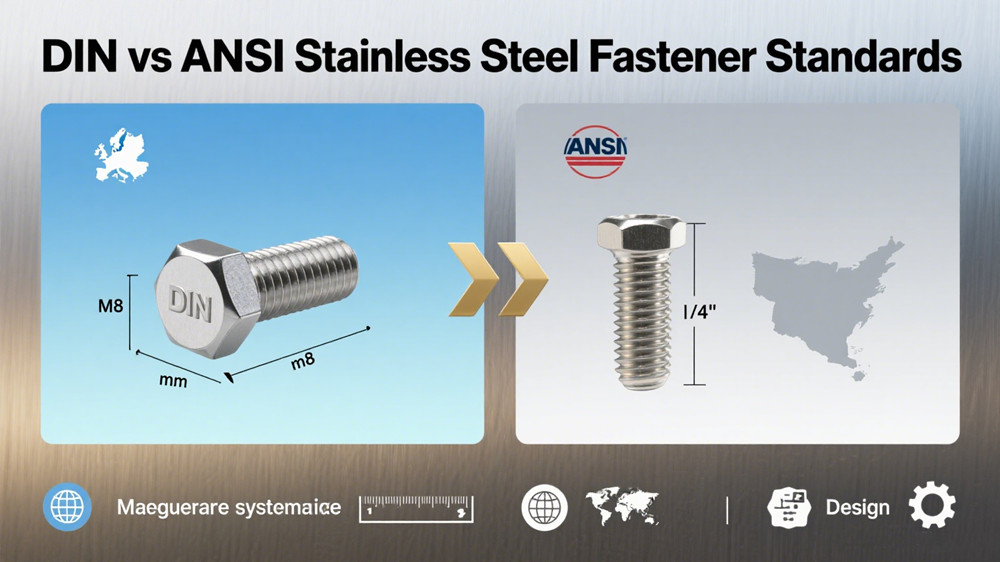
When sourcing stainless steel fasteners, it is essential to understand the difference between DIN and ANSI standards. These two systems, developed by the German Institute for Standardization (Deutsches Institut für Normung, DIN) and the American National Standards Institute (ANSI) in the United States, provide guidelines that ensure quality, safety, and compatibility in industrial applications.
What Are DIN Standards?
DIN standards are developed by the German Institute for Standardization. These standards are widely adopted across Europe and many other international markets. DIN specifications cover dimensions, materials, mechanical properties, and testing methods for stainless steel fasteners. Companies working with European or global supply chains often rely on DIN standards to ensure consistency and reliability.
What Are ANSI Standards?
ANSI standards, created by the American National Standards Institute, are primarily used in North America, especially in the United States. ANSI stainless steel fasteners follow specific requirements for size, tolerance, and performance. Manufacturers and engineers in the U.S. typically adopt ANSI specifications to ensure compliance with American industrial practices.
Key Differences Between DIN and ANSI Stainless Steel Fasteners
- Origin: DIN originates from Germany (Europe), while ANSI is based in the United States.
- Measurement System: DIN often uses the metric system, while ANSI standards are more likely to use the imperial system.
- Global Adoption: DIN standards are more widely recognized internationally, while ANSI standards are more common in North America.
- Design and Application: Engineers must carefully check dimensions and tolerances, as DIN and ANSI fasteners are not always interchangeable.
Why International Standards Matter
International standards, such as DIN and ANSI, play a critical role in global trade. For stainless steel fasteners, adhering to the right standard ensures durability, strength, and compatibility with other components. Manufacturers, distributors, and buyers should always confirm whether the project requires DIN or ANSI stainless steel fasteners to avoid mismatches.
Frequently Asked Questions (FAQ)
Q1: Are DIN and ANSI stainless steel fasteners interchangeable?
Not always. Since DIN standards from the German Institute for Standardization use the metric system and ANSI standards from the American National Standards Institute (United States) often follow the imperial system, there may be dimensional differences. Engineers should verify compatibility before substitution.
Q2: Which is more widely used internationally, DIN or ANSI?
DIN standards are more widely recognized across Europe and global markets, while ANSI standards are primarily used in North America, especially in the United States.
Q3: Why are international standards important for stainless steel fasteners?
International standards, including DIN and ANSI, ensure consistent quality, safety, and performance. They also allow manufacturers and buyers from different regions to align on specifications, reducing risks of mismatched parts.
Conclusion
Whether your project follows DIN standards from the German Institute for Standardization or ANSI standards from the American National Standards Institute, understanding these differences helps ensure the right stainless steel fasteners are selected. For businesses operating globally, being familiar with both systems is essential for success.
